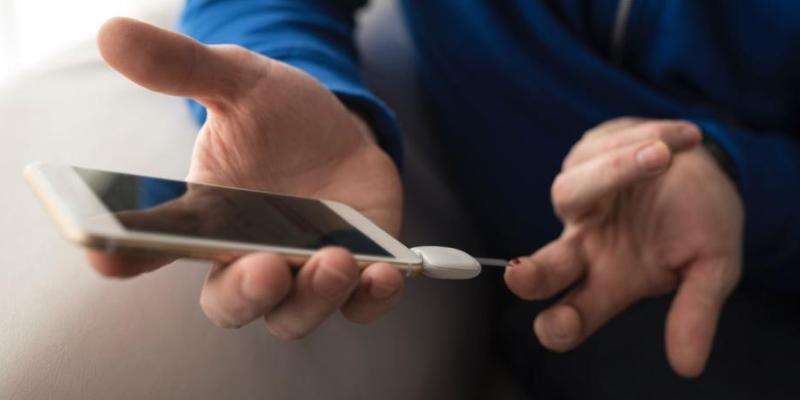Diabetes technology has come a long way.
From blood glucose meters and continuous glucose monitoring (CGM) to cutting-edge insulin pumps and more, devices are easier to use and less invasive. There are lots of options so that you can find what works best for you.
What Is a Smart Insulin Pen?
The new generation of connected insulin delivery devices may help simplify your routine.
A smart insulin pen is a reusable injector pen with an intuitive smartphone app that can help people with diabetes better manage insulin delivery. This smart system calculates and tracks doses and provides helpful reminders, alerts, and reports. They can come in the form of an add-on to your current insulin pen or a reusable form which uses prefilled cartridges instead of vials or disposable pens.
Smart insulin pens are a rapidly growing market. Why? Because they are typically more affordable, easy to use, and offer many benefits and improvements for people who depend upon insulin to manage their diabetes.
High-Tech Help to Better Manage Your Diabetes
The biggest challenges for many insulin pen (multiple daily injection) users are:
- Dose amount: How much to inject
- Dose timing: Shelf-life, temperature, and storage conditions
- Insulin quality: Shelf-life, temperature, and storage conditions
Learn more about smart insulin pens
Choosing How to Check Your Blood Glucose
For most people, checking blood glucose (blood sugar) meter is just a part of life. That’s why getting it right matters.
The two main types are blood glucose meters that use a drop of blood to check what your levels are at that moment and continuous glucose monitors (CGMs) that check your blood glucose regularly day or night—pick the one that works best for you and your lifestyle.
Of these two options, there are more choices than ever, from basic designs to more advanced models that have all the bells and whistles. And fancier isn’t necessarily better. Here are some things to consider:
- Ease of use–Some meters are made for simpler operation, whether it’s larger buttons, illuminated screens or audio capabilities.
- Cost and insurance coverage–Meters vary in price, and some insurers limit coverage to specific models. Start by checking with your provider to find out what they’ll cover.
- Information retrieval–Consider how the meter retrieves your information and whether you can download the data to a computer or mobile device to make it easier to share with your diabetes care team.
- Flexibility–If you’re using a blood glucose meter and are tired of finger pricks, there’s an alternative site monitor that lets you draw blood samples from your arm, thigh, or the palm of your hand.
Fewer Finger Pricks with CGM
If you have type 1 or type 2 and just want to manage your blood glucose better, continuous glucose monitoring may be right for you. CGMs report your blood glucose levels in real time (for example every five minutes throughout the day), alert you when your glucose hits a high or a low limit, and provide insight into glucose trends. Learn more about continuous glucose monitoring and time in range.
CGMs work through a sensor placed on your skin. It transmits readings to a small recording device. Whether you manage your diabetes with a pump, daily injections, or oral medications, a CGM can help you manage your blood glucose.
Is a CGM right for you?
Many people with type 1 and type 2 can benefit from using a CGM. Those that would benefit the most are people that have trouble reaching and maintaining target blood glucose. CGMs are particularly useful if you often have lows and are unaware of when they happen (hypoglycemia unawareness).
Even if you have a good handle on your diabetes management, you still may want to consider using a CGM for the convenience and the elimination of finger pricks. However, you’ll want to keep in mind that if you are managing your diabetes well without the use of a CGM, your insurance may not cover it—they might consider it a non-necessity.
When it comes to choosing the right CGM for you, we are here to help.
With Insulin Pumps, It’s Your Choice
The important thing to know is that a pump gives you options. You can get a pump, wear it for a time, decide to stop wearing it, and restart it if you think it will fit better with your treatment—work with your insurance to match whatever works for you.
Pumps are an extra piece of hardware attached to your body. They’re programmed to deliver insulin continuously (basal), or as a surge (bolus) dose close to mealtime to control the rise in blood glucose after a meal. They work by closely mimicking your body's normal release of insulin.
Is a Pump Right for You?
If your doctor determines that a pump is a good option for you, it's important to check with your insurance provider before you buy anything. Most insurance providers cover pumps, but sometimes they may not be covered and pumps can be expensive. In addition to cost, some considerations to consider when it comes to getting a pump are lifestyle, commitment, and safety. Learn more about the pros and cons of insulin pumps, and if they may be a good fit for you.
Remember, using a pump doesn’t mean you no longer have to check your blood glucose. And it can take some getting used to, from setting it up and putting it in to managing it day-to-day. Make sure you’ve spoken with your diabetes care team about how to use your insulin pump correctly and how to check if it’s working properly.
Connected CGM-Insulin Pumps and “Closed Loop” Systems
A newer option to consider is using a combination CGM-insulin pump. Your insulin pump will be able to integrate your glucose data from the CGM sensor and either suggest changes to insulin dosing or adjust the appropriate amount of background or basal insulin on its own. This is triggered when you run high (more insulin needed)—or when your blood sugar runs low (insulin needs to be suspended)—so you don’t have to think about it as much. Keep in mind, though, that you will still need to administer insulin for meals.
With several existing and emerging options on the market, you can pick the one that works best with your lifestyle and budget.






